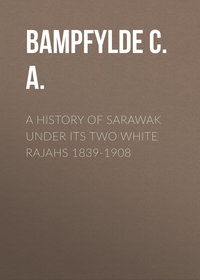 полная версия
полная версияA Book of the West. Volume I Devon
The view from the churchyard is magnificent. On a suitable day Cosdon Beacon on Dartmoor is visible. A row of cypresses in the churchyard was transplanted from the garden of Sir James Shepperd (d. 1730).
In old times the parsons of Honiton were supposed to have been addicted to field sports, perhaps unfairly, just as one hunting abbot gave a bad name to all the abbots of Tavistock. Barclay, in his Ship of Fools, says: —
"For if any can flatter and beare a hawke on his fist,
He shall be made parson of Honington or of Clist."
There is much deserving of visit within reach of Honiton, Colyton with its fine church, and the tomb of "Little Chokebone," a good monument, long supposed to be that of Margaret, daughter of William, Earl of Devon, and Katherine his wife, seventh daughter of Edward IV., who was supposed to have been choked by a fish-bone in 1512. But there is evidence that the lady lived long after the date of her presumed death. What also tells fatally against the identification is that the arms of Courtenay are impaled with the royal arms, surrounded by the bordering componée, the well-known token of bastardy. Now this belonged to the Beauforts, and the tomb is either that of Margaret Beaufort, wife of Thomas, first Earl of Devon, of that name, or else of one of their daughters.
Of Colcombe House, the great Courtenay, and then the Pole seat, but a fragment remains. At Colyton is the Great House, a fine old building, once the residence of the Yonges. The last of the family, Sir George Yonge, was wont to say that he came in for £80,000 family property, received as much as his wife's jointure, obtained a similar sum in the Government offices he enjoyed, but that Honiton had "swallowed it all" in election expenses. And when he stood for the last time there, in embarrassed circumstances; because he could not bribe as heavily as formerly, one of the burgesses spat in his face. He died in 1812, aged eighty, a pensioner in Hampton Court, and his body was brought down very privately to Colyton from fear of arrest for debt. Another old house is Sand, the seat of the Huyshe family.
Honiton has become famous for its lace, although actually the manufacture does not take place to any considerable extent in the town, but in villages, as Beer, Branscombe, Ottery, etc.
In the beginning of the sixteenth century Honiton was a centre of a flourishing trade in bone-lace, but how it was introduced is very uncertain. It has been supposed, but not proved, that Flemish refugees came to Honiton and introduced the art, but one does not quite see why they should have come so far. There is an inscription on a tombstone in Honiton churchyard to James Rodge, bone-lace seller, who died July 27th, 1617, and bequeathed to the poor of the parish the benefit of a hundred pounds. A similar bequest was made in the same year by Mrs. Minifie, a lace maker, so that both lace dealer and maker may have carried on their business for thirty years before they died.
In the latter part of James I.'s reign Honiton lace is frequently mentioned by contemporary writers. Westcote, in his View of Devon, 1620, says, "At Axminster you may be furnished with fine flax-thread there spunne. At Hemington and Bradnich with bone-laces now greatly in request." Acts were passed under Charles I. for the protection of the bone-lace makers, "prohibiting foreign purles, cut works, and bone-laces, or any commodities laced or edged therewith;" and these benefited especially the Devonshire workers, their goods being close imitations of the much-coveted Flemish pillow-laces.
Pillow-lace was preceded in England, as elsewhere, by darned netting and cut-work. A fine example of the ancient English net embroidery may be seen on the monument, in Exeter Cathedral, of Bishop Stafford, who died in 1398.
The pillow was introduced in the early part of Elizabeth's reign, and at first coarse thread-laces of geometrical design were worked on to it. Plaited and embroidered edgings, or purles, for the ruff, worked in silk, gold and silver wire, or thread came next, and formed the staple article during the first half of the seventeenth century. The patterns were imitated from Italian cut-work and reticella, with some marked peculiarities of workmanship and detail, such as the introduction of stars, wheels, and triangles, which are only found on English laces. The sculptor of Lady Pole's monument in Colyton Church (1623), evidently copied the bone-lace on her cape from a specimen of Devonshire make, and equally characteristic of the ancient patterns of the county is the probably plaited lace on a tucker and cuffs that adorn the effigy of Lady Doddridge in Exeter Cathedral (1614). Illustrations of these interesting examples of early Devonshire workmanship are given in Mrs. Palliser's "History of Lace."5
There is another very fine specimen in Combe Martin Church, the effigy of Judith Hancock (1637). The figure is life-size, and the dress is covered with point-lace and looped with points of ribbon.
The reason of the coarseness of early lace was that pins were rare and fetched a high price, and the humble workers in cottages employed fish-bones about which to twist their threads, stuck into the parchment in the shape of the pattern. The bobbins were made of "sheeps' trotters." It is now very difficult to procure specimens of this fishbone-lace.
The lace produced by James Rodge and his contemporaries had large flowing guipure patterns, united by bride picotees, the latter worked in with the Brussels ground. Brides are the small stripes or connection of threads overcast with stitches which bind the sprigs together. The English lace-makers could not make this exquisite stitch with the thread that England produced, and the thread was brought from Antwerp. At the end of last century it cost from £70 to £100 per pound. Old Brussels lace was made on pillows, while the modern Brussels is worked with needles.
The visitor to Honiton, Beer, or any village around may see lace-making on pillows. The women have round or oval boards, stuffed so as to form a cushion, and placed on the knees of the worker: a piece of parchment is fixed over the pillow, with the pattern drawn on it; into this the pins are stuck through holes marked for the purpose. Often as many as four hundred bobbins are employed at a time on a pillow. Many of the "bobbins" and "turns" to be seen in Devonshire cottages are very old: the most ancient are inlaid with silver. On some, dates are carved, such as 1678 or 1729. On some, Christian names are cut, such as John and Nicholas; probably those of the sweethearts of the girls who used them. Jingles, or strings of glass beads, may be seen hanging to them, with a button at the end, which came from the waistcoat of the John or the Nicholas who had given the bobbin as a keepsake. What life-stories some of these old bobbins could tell!6
Children began to make lace as early as four years old; indeed, unless early trained to the work their hands never acquire deftness. Board schools and compulsory education are destroying the ability to work as of old, as well as too often killing the desire for work in the hearts of the children.
Boys and girls were formerly taught alike, and in some of the seaside villages fishermen took up their pillows for lace-making when ashore.
Guipure à bride and scalloped-border laces in the Louis XIV. style were followed by laces grounded with Brussels vraie réseau. In the working of the latter, Devonshire hands were decidedly superior to their Continental rivals. This beautiful ground, which sold at the rate of a shilling the square inch, was either worked in on the pillow after the pattern had been finished, or used as a substratum for lace strips to be sewn on. The detached bouquets of the Rococo period, and the Mechlin style of design towards the end of last century, eminently suited the Devon lace-workers, as dividing the labour. Each individual hand could be entrusted with the execution of a floral design, which was repeated mechanically. The superior finish of the Honiton sprigs between 1790 and 1815 was mainly due to this, but it was fatal to all development of the artistic faculty and to general deftness. During this period Honiton produced the finest laces in Europe. What greatly conduced to the improvement of Honiton lace was the arrival of Normandy refugees at the outbreak of the French Revolution in 1793. The Normans were quicker and sharper than the Devon workers, and they stirred them up to great advance in their work. They taught them to make trolly lace, which is worked round the pillow instead of on it; and through their example the Devonshire women gave up the slovenly habit of working the ground into which they had slipped, and returned to the old double-threaded réseau, or ground like the old Flemish, the flowers worked into the ground with the pillow, instead of being appliqué.
Honiton lace made in proper fashion with sprigs was formerly paid for by covering the work with shillings.
There is a curious notice of Honiton lace in a note by Dr. James Yonge; who "was again at Honiton, April 23rd, 1702," and witnessed the rejoicings in celebration of the coronation of Queen Anne.
"Saw a very pretty procession of three hundred girls in good order, two and two march with three women drummers beating, and a guard of twenty young men on horseback. Each of the females had a white rod in her hand, on the top of which was a tossil made of white and bleu ribband (which they said was the Queen's coleurs) and bone-lace, the great manufacture. Then they had wandered about the town from ten in the morning [it was eight in the evening when he saw them] huzzaing every now and then, and then wearing their rodds. Then they returned at nine, and then break up very weary and hungary."7
Taste declined during the latter part of last century, and some of the designs of Honiton lace were truly barbarous – frying-pans, snails, drumsticks, and stiff flowers. But there were always some who did better. At the beginning of this century all taste was bad. Bald imitations of nature prevailed, without any regard to the exigencies of art. Roses and other flowers were worked in perspective; it was thought sufficient to servilely copy nature and leave grouping to chance.
Queen Adelaide had a dress made of Honiton lace. By her desire all the flowers were copied from nature, and the first letter of each spelt her name.
Amaranth.
Daphne.
Eglantine.
Lilac.
Auricula.
Ivy.
Dahlia.
Eglantine.
The present Queen also had her wedding-dress of Honiton lace, and it cost a thousand pounds.
Unhappily, design sank very low. Perhaps the lowest stage of degradation in design was reached in 1867, when a Honiton lace shawl sent to the Paris Exhibition from Exeter received a prize and commendation. Nothing can be conceived worse. That it should have been rewarded with a medal shows that either the judges pardoned the ineptitude in design for the sake of the excellence of the work, or else that they themselves stood on the same level of artistic incompetence which then prevailed. Since then, happily, design has been more studied. There is still a good deal of very sorry stuff produced – as far as artistic design is concerned – but at the same time there is much faithful copying of good antique work. All old work is not good; there were bad artists in the past, but the general taste was better than it is now. I was once in the shop of one of our foremost furniture dealers and decorators in town, when a young married couple came in to choose curtains and carpets for their new home. I had been talking with the head of the establishment about artistic furniture, and he had shown me carpets, curtains, and wall-papers, such as no designer in the fifteenth, sixteenth, or seventeenth centuries would have blushed to produce. The young couple passed all these samples by – blind to their merits, and pounced on and chose some atrocious stuff, bad in colour and bad in art. When they were gone, the proprietor turned to me: "You see," he said, "the public is still uncultivated; we are forced to keep rubbish in our trade to satisfy those whose taste does not rise above rubbish." Now it is the same with regard to lace. There is badly designed lace as well as that which is as good as anything drawn by a great master in the past. Let the public eye be discerning to choose the good and reject the evil, and then the poor lace-workers will not be set to produce stuff that never ought to have time, labour, eyesight devoted to it.
There are some trades that are hurtful to those employed in them. The lace-making by machinery at Nottingham is said to induce decline.
The following letter I have received on the subject of the Honiton lace-workers: —
"They are most certainly not a short-lived lot – until within the last eight or nine years Mrs. Colley was the youngest worker I knew, and she is fifty-one; Mrs. Raymond is sixty-four. There are a good many over sixty, and several still at work over seventy. I have never had cases of decline come under my notice, and if there was any I must have known it. Until the fresh impetus was given to the trade by exhibitions, the younger workers stopped learning, and there was no school, so that the trade depended on the old ones, and all have to commence the work from five to seven years of age. I think it may fairly be assumed to be at any rate not injurious to health, and judging from the age to which they continue to work, not to the sight either."
Thus the buyers of lace can do it with a safe conscience.
There is a woman's name associated with Devon, who was a great landed proprietress and an heiress, and this was Isabella de Fortibus. She was sister of Baldwin, Earl of Devon, a De Redvers, and on his death, without issue, she inherited the splendid estates of the earls of Devon, and became Countess of Devon in her own right. She, however, also died without issue in 1292.
On Farway Common, near Honiton, three parishes meet, and there were incessant disputes as to the boundary. Isabella decided it thus. She flung her ring into the air, and where it fell that was to be the point of junction for Gittisham, Farway, and Honiton. The spot is still called "Ring-in-the-Mere." Such at least is the local legend accounting for the name.
In the neighbourhood of Honiton are the ruins of Dunkeswell Abbey, but they are reduced to a gateway only. It belongs to Mrs. Simcoe, of Walford Lodge, Dunkeswell, a handsome house built about the end of last century by General Simcoe, famous in the American Revolution as the commander of Simcoe's Rangers. He was Governor of San Domingo at the time of the insurrection, and afterwards Governor-General of Canada. Mrs. Simcoe possesses interesting relics connected with him, as well as Napoleonic relics that belonged to her father, Lieut. – General Jackson, aide-de-camp to Sir Hudson Lowe at St. Helena.
Mohuns-Ottery, once a great seat of the Carews, was burnt down in the beginning of this century, and all that remains of the mansion are three arches. The Grange, Broadhembury, has been more fortunate; it has a magnificent oak-panelled room, with ghost stories attached, and there are those alive who declare that they have seen the ghost. The church possesses, among other points of interest, a curious window with projecting corbels that represent the spirits of the good in happiness within, and the spirits of the bad without in discomfort – not to put too fine a point on it, as Mr. Snagsby would say.
There are several fine fortifications, as already said: Dumpden, accessible only on foot, and Hembury are the most important.
Books to be consulted: —
Rogers (W. H. H.), Memorials of the West. Exeter, 1888.
Farquharson (A.), The History of Honiton. Exeter, n. d., but 1868 (scarce).
For the Axe Valley: Pulman (G. P. R.), The Book of the Axe. London, 1875.
CHAPTER IV.
A LANDSLIP
The chalk beds on sand – The subsidence of 1839 – The great chasm – Present conditions – The White Cliff – Beer quarries – Jack Rattenbury.
There are a good many more curious things to be seen in England than is generally supposed, if we will but go out of the highways to look for them. Certainly one of the most extraordinary and impressive is the great landslip between the mouth of the Axe and Lyme Regis; one which even extended further west beyond the estuary. On this bit of coast, where Devonshire passes into Dorset, the cliff scenery is very fine. The White Cliff is a magnificent headland that possesses the peculiarity of appearing to lean over preparing to slide into the waves, owing to the inclination of the varicoloured strata of which it is composed. To understand the phenomenon which occasioned the subsidence of a whole tract of coast with the alteration of the coastline, something must be said of the cause of the catastrophe. The chalk bed striped with lines of glistening black flints is superposed upon a bed of what is locally termed fox earth, a bed of gravel or sand that intervenes between it and the clay beneath. Now the rain that falls on the chalk downs infiltrates and, reaching the sand and unable to sink through the clay, breaks out in land springs.
But where the chalk cliffs start sheer out of the sea, there the springs ooze into the sea itself, and, dissolving the texture of the sandy bed, resolve it into a quicksand, liable at the time of great floods to be washed out from under the superincumbent chalk. Should this take place, there is no help for it, but down the chalk bed must go. If you were lying on a bed, and the mattress under your feather bed were pulled away, you would descend, sinking to a depth equivalent to the thickness of the subtracted mattress. That is plain enough.
Now all along the coast to the east of Lyme Regis there is an undercliff – evident tokens of a subsidence of this description which has taken place at some time. When this undercliff has been eaten up by the sea, and a fresh face of crag exposed, then again there will occur a displacement, a pulling out of the mattress, and down will go the chalk above with all the houses and fields upon it. But the sea has not as yet done more than nibble at this undercliff.
It was not quite so to the west of Lyme. There sheer cliffs of glistening white rose above the pebbly shore, so abruptly and with such slight undulations, that several miles ensued before it was possible for those on the height to descend to the beach. Naturally, where the rain-water percolated through the chalk it formed no valleys with streams.
Thus the cliffs stood – for no one knows how long – till the end of December, 1839.
Previous symptoms of the approaching convulsion were not altogether wanting. Cracks had been observed for more than a week opening along the brow of the Downs, but they were not sufficiently remarkable to attract much attention, as such fissures are by no means uncommon on this bit of coast. However, about midnight of December 24th, the labourers of Mr. Chappel, the farmer who occupied Dowlands (about a quarter of a mile inland from the brow of the cliff, and over half a mile from the nearest points of the approaching convulsion) were returning from a supper given them by their employer, whereat the ashen faggot had been burnt according to custom, and were making their way to their cottages, situated near the cliff. Then they noticed that a crack which crossed their path, and which they had observed on their way to the Christmas Eve supper, had widened, and that the land beyond had sunk slightly. Nevertheless they did not consider the matter of great importance, and they went to their homes and to bed. About four o'clock in the morning they were roused by their houses reeling, by the concrete floors bursting and gaping, and the walls being rent. They started from their beds in great alarm, and about six o'clock arrived at the farm to rouse their master; they had found their escape nearly cut off, as the crack had widened and the land on the sea side had sunk considerably, so that they had, with their wives and children, to scramble up – and that with difficulty, and, in the darkness, with no little danger.
Happily all escaped in time.
During Christmas Day there was no great change; parties of the coastguard were stationed on the Downs throughout the ensuing night to watch what would happen.
About midnight a great fissure began to form which ran in almost a direct line for three-quarters of a mile. This fissure rapidly widened to 300 feet, descending, as it seemed at first, into the very bowels of the earth, but as the sides fell in it finally was choked at a depth of 150 feet.
One James Robertson and a companion were at that hour crossing the fields which then extended over this tract, and stumbled across a slight ridge of gravel, which at first they thought must have been made by some boys, but one of them stepping on to it, down sank his leg, and his companion had to pull him out of a yawning chasm. Next moment they saw that the whole surface of turf was starred and splitting in all directions, and they fled for their lives. The sound of the rending of the rocks they described as being much like that of the tearing of cloth or flannel. Two other members of the coastguard, who were stationed on the beach, now saw something begin to rise out of the sea like the back of a gigantic whale; at the same time the shore of shingles on which they stood lifted and fell, like the heaving of a breast in sleep. The water was thrown into violent agitation, foaming and spouting, and great volumes of mud rushed up from below. The great back rose higher and ever higher, and extended further till at last it formed a huge reef at a little distance from the beach. This ridge was composed of the more solid matter, chert and other pebbles, that had been in the sand under the chalk, and which by the sinking of the chalk was squeezed out like so much dough. It remained as a reef for some years, but has now totally disappeared, having been carried away by the waves.
As the great chasm was formed, the masses from the sides falling in were, as it were, mumbled and chewed up in the depths, and to the eyes of the frightened spectators sent forth flashes of light; they also supposed that an intolerable stench was emitted from the abyss. But this was no more than the odours given out by the violent attrition of the cherty sandstone and chalk grinding against each other as they descended.
Throughout the 26th the subsided masses of the great chasm continued sinking, and the elevated reef gradually rising; but by the evening of that day everything had settled very nearly into the position in which it remains at present, although edges have since lost their sharpness and minor rents have been choked.
A writer whose reminiscences have been recently published describes briefly the aspect of the place after the sinkage.
"I rode over to see this huge landslip. The greater part of a farm had subsided a hundred feet or more. Hedges and fields, with their crops of turnips, etc., were undisturbed by the fall, and broken off sharply from the ground a hundred feet above. There was a rather dislocated ridge on the shore, which formed a sort of moraine to the slip. On this part were some cottages twisted about, but still holding together, and having their gardens and even their wells attached; yet the shock of the falling mass had been so great as to cause the upheaval of an island off shore."
The aspect of the landslip on the farms of Bindon, Dowlands, Rousdon, and Pinhay at present is full of interest and of picturesque beauty. Ivy has grown luxuriantly and mantles the crags, elder bushes have found the sunk masses of rock suitable to their requirements, and in early summer the air is strong with the scent of their trusses of flowers, and in autumn the whole subsidence is hung with thousands on ten thousands of shining black clusters of berries. Above a sea of foliage the white cliffs shoot out in the boldest fashion, and out of the gorge start horns, pinnacles of chalk of the most fantastic description. The whole is a labyrinth of chasms, not to be ventured into with good clothing, as the brambles grow in the wildest luxuriance and are clawed like the paws of a panther. But, oh! what blackberries may be gathered there – large, sweet, luscious as mulberries. Moreover, the whole sunk region is a paradise for birds of every description, and not a step can be taken that does not disturb jackdaws, magpies, warblers of every kind. One of the cottages that went down has been rebuilt with the old material. As already said, it descended at least a hundred feet with its well. The well still flows with water; that, however, is not now marvellous – how it was that it held water previously is the extraordinary fact.











